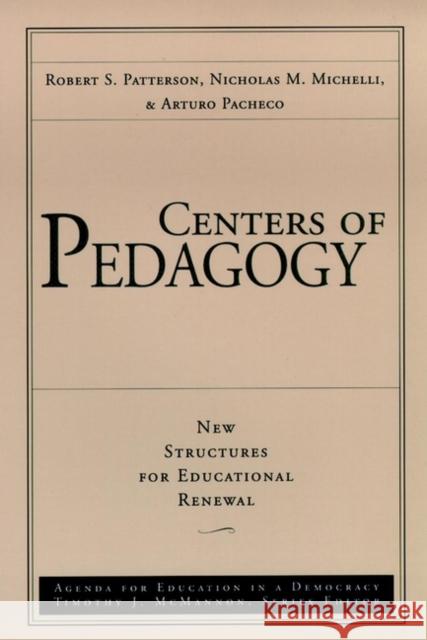Centers of Pedagogy Educational Renewal » książka
Centers of Pedagogy Educational Renewal
ISBN-13: 9780787945619 / Angielski / Miękka / 1999 / 288 str.
From the AgAnda for Education in a Democracy Series
Sponsored by the National Network for Educational Renewal
Afterword by John I. Goodlad
-Everyone wants to transform teacher education. Most agree that transformation can only occur when arts and science faculty, teacher educators, and K-12 practitioners join together. IntAnded for provosts and college deans, school leaders and university faculty, this book provides guidance on achieving that transformation through a structural innovation called a Center of Pedagogy.-
--David G. Imig, chief executive officer, American Association of Colleges for Teacher Education
-From vision to reality--this book provides a rationale and illustrations of ways to build bridges among the arts and sciences, education, and partner schools to create a faculty devoted to strengthening teacher preparation and schooling.-
--Jan Kettlewell, assistant vice chancellor for academic affairs, University System of Georgia
-Administrators and teacher educators interested in and committed to building school-university partnerships ought to read Centers of Pedagogy. It will help dedicated and determined educators committed to systemic change to better respond to the challenges they face.-
--Robert V. Bullough, Jr., professor of educational studies, The University of Utah
This volume in the AgAnda for Education in a Democracy series examines a growing movement of schools and universities collaborating in ways that break down traditional barriers and promote systemic educational renewal. Centers of Pedagogy offers a practical framework for advancing university-school collaboration on educational improvement. The authors draw from their diverse experiences as university deans and focus on the Centers of Pedagogy model, a strategy conceived by John Goodlad and refined by participating institutions in the National Network for Educational Renewal. Under this model, faculty in teacher education, the arts and sciences, and the P-12 schools work together to provide aspiring teachers with a well-rounded education. This collaboration ultimately improves school curricula, teaching practice, and the education of educators. Featuring case examples from a variety of successful partnership programs, this book studies the policies, organizational structures, and other key conditions needed to establish such vital centers.











